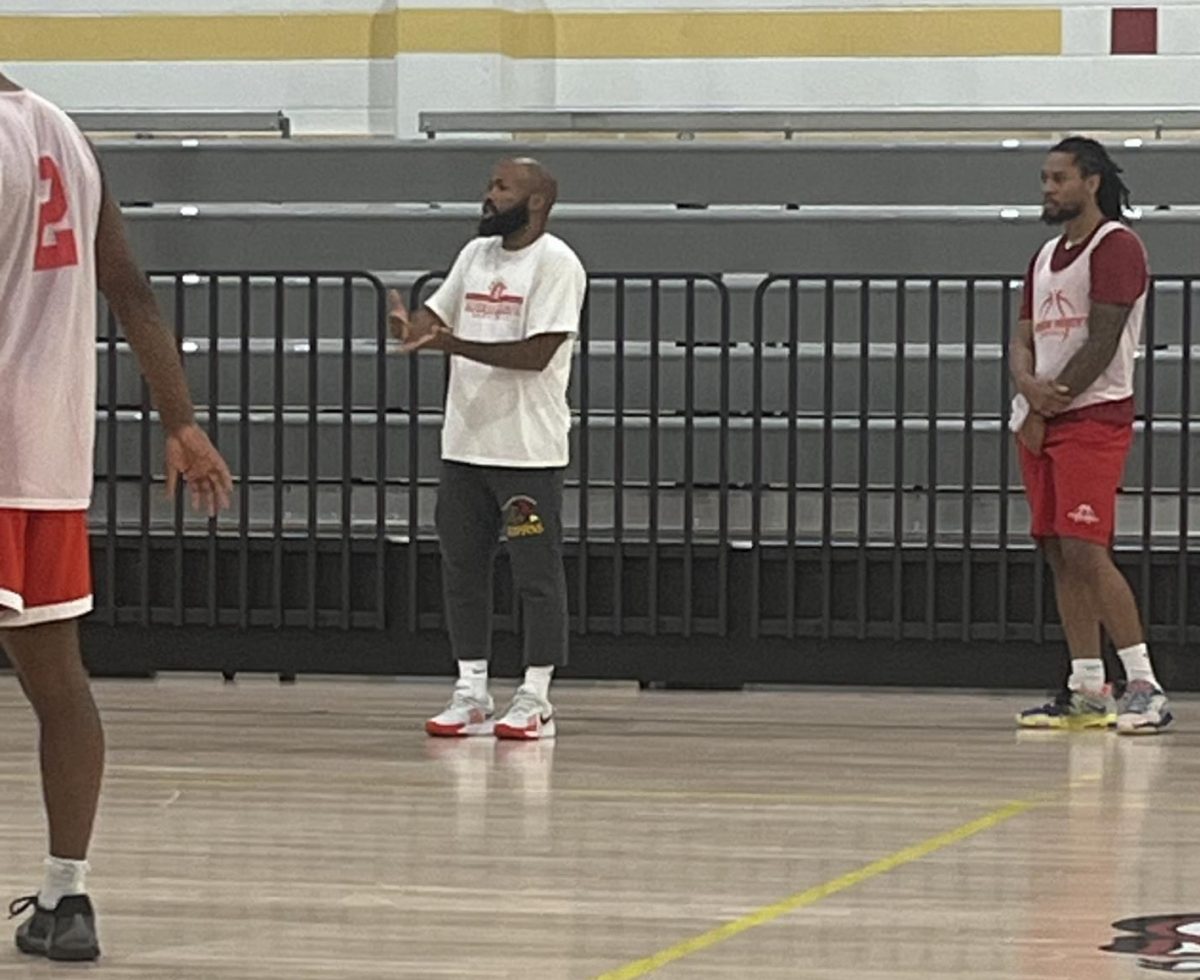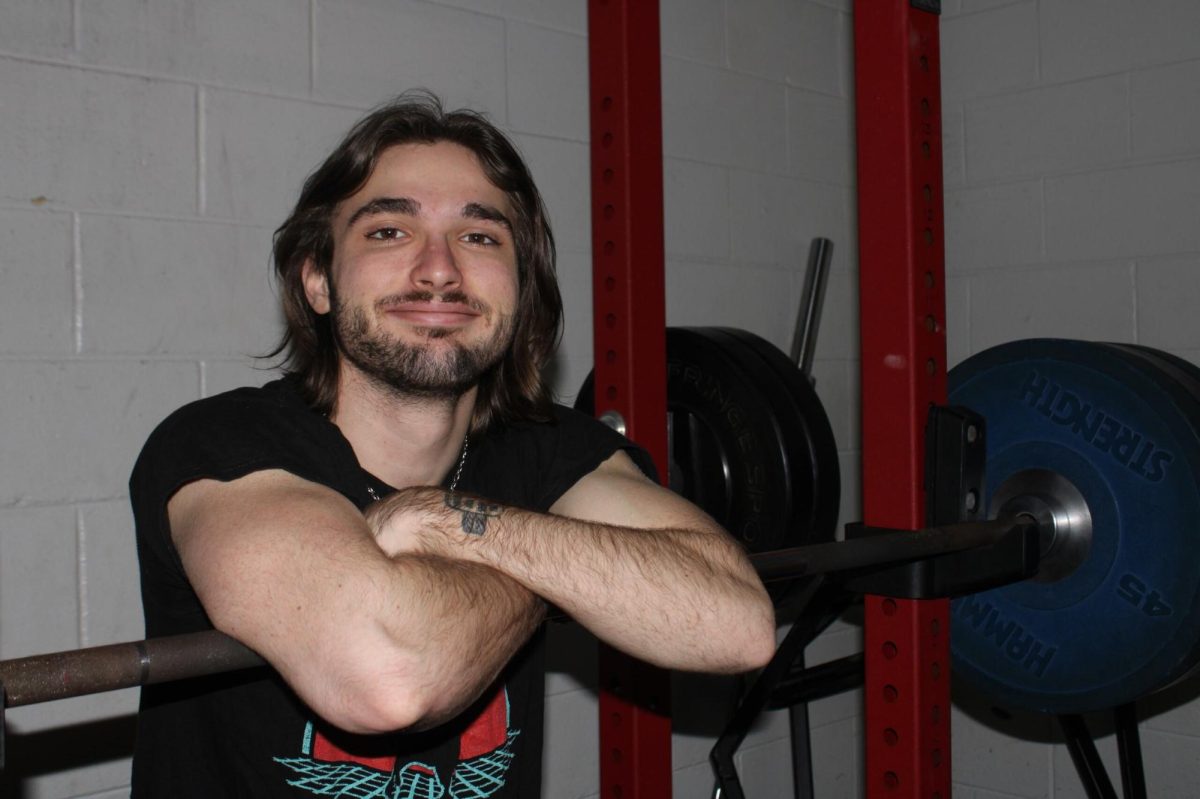Tyson Scheitrum, a first-year computer science major, threw 12.06 meters at the Moravian Indoor Invitational on January 18th, breaking GMercyU’s 13-year-old record for the weight throw. At his next meet on January 31st, he broke his own record when he threw 12.77 meters at the Seamus McElligott Invitational.
Previously, the record had been set by Nuhlah Kerkulah after he threw 11.11 meters during the 2011-2012 season.
“The first record breaking, I didn’t realize or acknowledge it. It was just kind of another thing, throwing is about improving yourself.” recalled Scheitrum, reminiscing on how he felt after throwing his record-breaking distance.
“But the second time, I realized I am actually doing some history here. I’m creating some new culture, putting in some better marks. Hopefully better people come in, seeing these types of distances, and hopefully come to our school to throw for us too”.
Doug Smith, GMercyU’s assistant track coach, forecasts that this is just the beginning for Scheitrum. “He had said he had wanted it, and he did it early. That was always the goal. He set the record, and then everything since then has been in and around that area. Instead of that being his ceiling, that’s getting close to his floor. The potential is there.”
Weight throwing involves the participant taking a 35-pound ball at the end of a handle and spinning to gain momentum before throwing it. It is typically performed in conjunction with track and field events.
“It takes strength. It takes core. It takes balance and momentum. It takes just the desire to be good at it.” explained Smith
Scheitrum’s journey in throwing started back in fourth grade, where he began with the outdoor sport, discus.
“I went to a Catholic school, and they had a track and field Catholic league. I tried running first, but I wasn’t too good at it. So my dad suggested trying discus, just throwing around seeing if I was any good at it, and then I actually was.”
Scheitrum stuck with the sport from there on out. Then, in eighth grade, Scheitrum was diagnosed with type 1 diabetes.
Type 1 diabetes is a chronic condition, primarily caused by genetic factors. The Centers for Disease Control and Prevention describes the condition, “If you have type 1 diabetes, your pancreas doesn’t make insulin or makes very little insulin.” Insulin is the hormone responsible for managing a person’s blood sugars, which directly correlates to an individual’s energy levels.
Scheitrum recalls his initial reaction to his diagnosis, “At first it was kind of confusing, how to manage things. I never had anything like this before, and my blood sugars weren’t in control because I had just gotten diagnosed.” Since then, Scheitrum has become more comfortable with his condition. “Over the years, I got better control over my blood sugars. Better ranges, numbers, I haven’t had to worry about it too much except for the usual exercising or working out”.
Scheitrum continues to contribute to the conversation regarding type 1 diabetes and athletics on his Instagram page “Discus for Diabetes”. There, he raised money throughout high school for a fundraising campaign through Penn State Milton S. Hershey Medical Center. In that time, he has raised $2,203. All proceeds went to Pediatric Endocrinology for Type 1 diabetes.
Scheitrum has to take precautions during meets and practices to ensure he is managing his blood sugar while performing physical activity. This includes monitoring it consistently and watching for signs that his blood sugar is dropping.
“I need to worry about my blood sugar.” Scheitrum explains, “but if I am throwing at all, then it just takes some Smarties to bring it back up. I know how much I need to take, each Smartie raises me 5 blood sugar points”.
Understanding the food you are consuming is vital to managing type 1 diabetes properly. Scheitrum has to avoid consuming too many carbohydrates, such as bread and pasta, and focus on how much protein and sugar he is consuming.
“I’m constantly thinking about nutrition labels. What’s in it, what to avoid, calculating the carbs into insulin, taking my insulin, doing finger sticks to make sure my blood sugar is okay.” Scheitrum explains, “It all adds up to many, many decisions during the day, some which can be life threatening.”
Being diabetic and an athlete can come with social stigma. Without understanding how type 1 diabetes can be managed, people will come up with their preconceived notions on your abilities as an athlete.
Scheitrum refers to his experience with others regarding his condition, “Some people just assume I can’t do stuff, but just because you’re diabetic doesn’t mean you have to stop doing stuff. You just have to adapt and learn to overcome these things. There really isn’t too many stereotypes, but people think things. Sometimes they say them, sometimes they don’t. If you’re concerned about my health, just tell me, I don’t really care.”
In some extreme cases, Scheitrum just has to ignore the comments. Especially if they occur during a blood sugar crash. “I have to take care of myself. I don’t care what you say to me, but let it be known it does hurt my feelings. I just can’t listen to you. I can’t just pass out. This isn’t a steroid, it’s just my life-saving insulin”.
March 22nd, the outdoor season will begin. Scheitrum expressed excitement for the upcoming events, where he will be participating in discus and hammer throw. Smith is confident Scheitrum will continue to bring a positive impact this season. “This is just the beginning, truly, and the best is yet to come. With the way his throws are working, there could be some pretty big things coming in the spring”.














